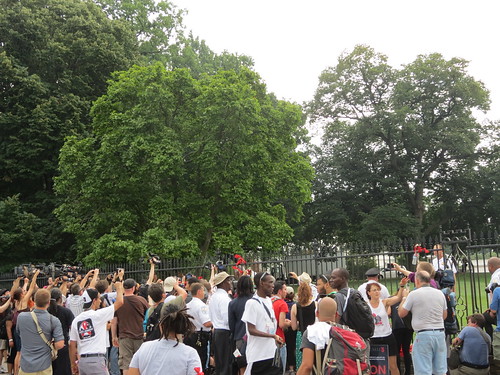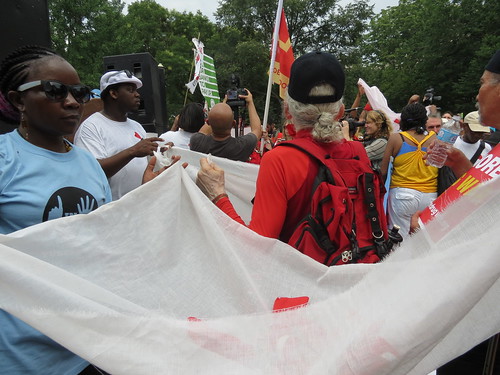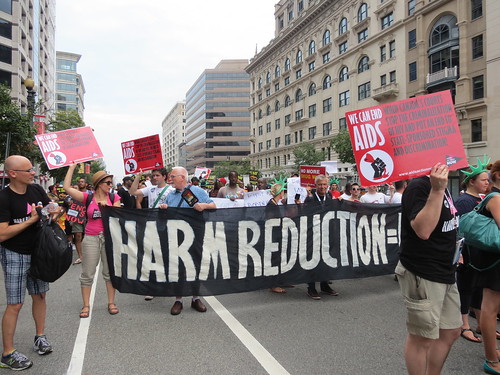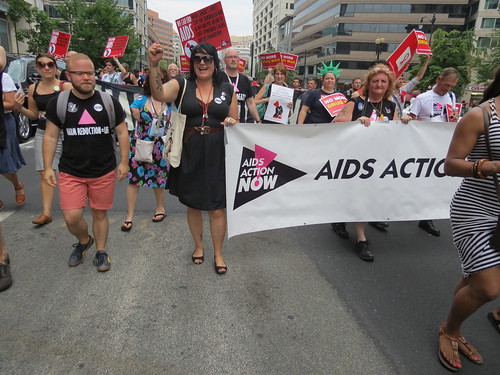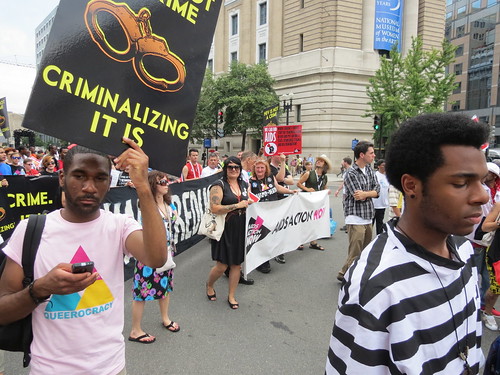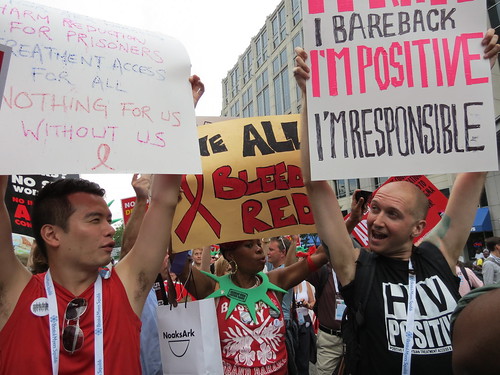This is the second in a series of blog posts about the recent Supreme Court of Canada decisions about the criminalization of HIV non-disclosure. See the first post here, in which we wrote about the perverse, negative impacts of the decision for women living with HIV. The decisions in the Mabior and DC cases, in addition to enshrining HIV stigma in the rule of law, beg a discussion of access to treatment for people living with HIV in Canada. We firmly believe that the decisions will not only be a disaster for women, they will likely also have a disproportionately negative impact on people living with HIV who are socially and economically marginalized and lack access to high quality health care.
In the Mabior and DC cases, the Court established a ridiculous criminal law test based on a realistic possibility of HIV transmission. The test might be best described as “bad science fiction,” requiring people to disclose their HIV status to sexual partners unless they have a low viral load and use condoms for sexual intercourse. This test effectively creates a legal distinction between two groups of people living with HIV—those people with “low” viral loads in their bloodstream, and those with “higher than low” viral loads. Confused about what that means? So are we. Under the Court’s decision, the “higher than low” group now face increased uncertainty about their legal obligations, and an additional threat of criminalization.
The Court has thrown two HIV prevention strategies, each highly effective at preventing HIV transmission, together into one risk test. The result? The Supreme Court has enshrined a so-called prevention guideline that’s as laughable as it is incongruent with any credible HIV prevention education taking place around the world. Despite the medical evidence that that condoms, used properly, stop HIV transmission—which has underpinning the HIV movement for the last 30 years—people with higher than low HIV viral loads will be hard pressed to defend themselves against criminal charges based on HIV non-disclosure. We also know, based on a large body of scientific evidence, that HIV medications significantly reduce the risk of HIV transmission between people. “Optimal HIV treatment” occurs when a person achieves an undetectable viral load (under 50 copies of HIV per milliliter of blood). Having a low or undetectable viral load drastically reduces the damage HIV can do to a person’s body and sets up the best scenario for people to live strong, healthy lives. For many people living with HIV, taking HIV medications allows them to achieve a low or undetectable HIV viral load, which in turn significantly reduces, and in some cases effectively eliminates, the likelihood that they will transmit the virus.
The Court’s low viral load plus condoms test, itself an injustice, demands we dig deeper into the realities of living with HIV. And ask how the decision is likely to play out for people living with HIV, especially the most marginalized among us. This is a crucial question for those of us who believe that the state has a role in promoting health and wellbeing, equity in health program and services, and human rights. Why are some people able to keep the HIV in their body under control (whether at a low or undetectable level), and others not? Are some people receiving sub-optimal HIV care and treatment? Are the answers to these questions strictly biomedical or, as is so often the case in the HIV epidemic, a product of social and economic inequality brought about by marginalizing structures in our society?
We have universal health care. But that is a value more than a reality. While the Canada Health Act proclaims universal access to medical services, it doesn’t result in equal access to healthcare for all people in every province or region, and certainly doesn’t guarantee universal access to pharmaceutical care. Treating HIV is a complicated task. Some people, despite trying different treatment protocols, just can’t achieve an undetectable viral load – their bodies don’t work that way. While not ideal, HIV specialists deal with this all the time and have a number of strategies to work with patients so they can be healthy – despite having a detectable viral load.
However, many more people haven’t achieved “optimal HIV treatment” because they don’t have access to consistent HIV treatment, if they have access at all. Achieving an undetectable viral load requires a person living with HIV to take (“adhere to”) their treatment when prescribed, as prescribed. This can be hard for people for a lot of reasons—anything from the challenge of taking drugs that, for many, have harsh side effects, or to making sure the pharmacy where they live will even have enough drugs to dispense when it comes time to renew prescriptions. Post-Mabior, a low or undetectable viral load has effectively become a threshold for equal citizenship under the law. People living with HIV who can’t achieve this medical measurement are now threatened with criminalization in a way their low or undetectable peers are not.
We don’t have a comprehensive picture of how many HIV-positive people in Canada are on HIV anti-retroviral treatment. Nor do we know how many have achieved undetectable viral loads. But we know that people living with HIV who are already heavily marginalized experience significant treatment access barriers and, as a result, aren’t able to achieve undetectable viral loads. Recent research has shown what many of us working in the field have known for a long time:
- people living with HIV who are homeless or under-housed are often refused treatment and, when they have access, experience challenges adhering to treatment
- people who use drugs are often refused treatment by medical practitioners who believe they aren’t able to adhere to a treatment regimen
- prisoners often experience treatment interruptions when corrections pharmacies run out of stock, or they don’t receive treatment in a timely fashion during lockdowns or transfers
To put it another way, people who experience treatment barriers and, as a result, face significant challenges achieving an undetectable viral load, are the people living with HIV who are already criminalized and marginalized.
The Supreme Court ruling increases the burden on these folks living with HIV—adding further threat of criminal prosecution. Meanwhile, what is being done to create new programming that expands access to treatment, health care, housing and additional social services for them?
In making this contemptible ruling, the Supreme Court has not only further stigmatized people living with HIV, but it has divided people living with HIV into two classes—those with responsive immune systems, and access to treatment and health services versus those without. One lesson here, among many, is that we must continue our fight for the health and rights of all people living with HIV, especially those already marginalized by our deeply unequal, judgmental and unjust social institutions and practices.














